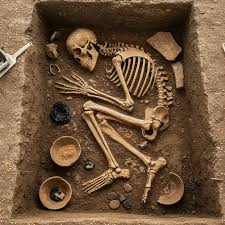The Perfect Burial or a Message from the Past
The discovery of Tutankhamun’s tomb in 1922 stands as a powerful testament to how a single burial can be both a “perfect burial” and a profound “message from the past.” Uncovered by Howard Carter in Egypt’s Valley of the Kings, the tomb was unique not for its size, but for its stunning state of preservation. It was found almost entirely intact, with its ancient seals unbroken, a rare occurrence that allowed archaeologists to witness a pharaonic burial exactly as it was performed over 3,300 years ago. The sheer volume of treasures—from the golden sarcophagus and the iconic burial mask to countless chariots, furniture, and personal items—provided an unparalleled, undisturbed snapshot of ancient Egyptian life.

The intricate contents of the tomb were, in essence, a meticulously crafted message. Every object, from the smallest amulet to the grandest golden shrine, was placed with a specific purpose: to guide and sustain the young pharaoh on his journey to the afterlife. The golden burial mask, for example, was not just a representation of Tutankhamun but a magical effigy meant to protect his spirit. The scenes painted on the tomb’s walls were a visual instruction manual for his soul’s passage. This was a message intended not for the living, but for the gods and for eternity, a message about a king’s divinity and a civilization’s deeply held beliefs.

Ultimately, it was the “perfect burial”—its remarkable preservation—that allowed modern humanity to finally read this ancient message. The tomb’s treasures didn’t just tell us about the wealth of a pharaoh; they revealed a complete narrative of his life, his death, and the religious cosmology that shaped his world. It proved that a burial was far more than a final resting place; it was a deliberate act of communication, a final, public declaration of faith and power, etched into the walls and objects of a subterranean chamber, waiting for the right moment in time to be understood once more.
